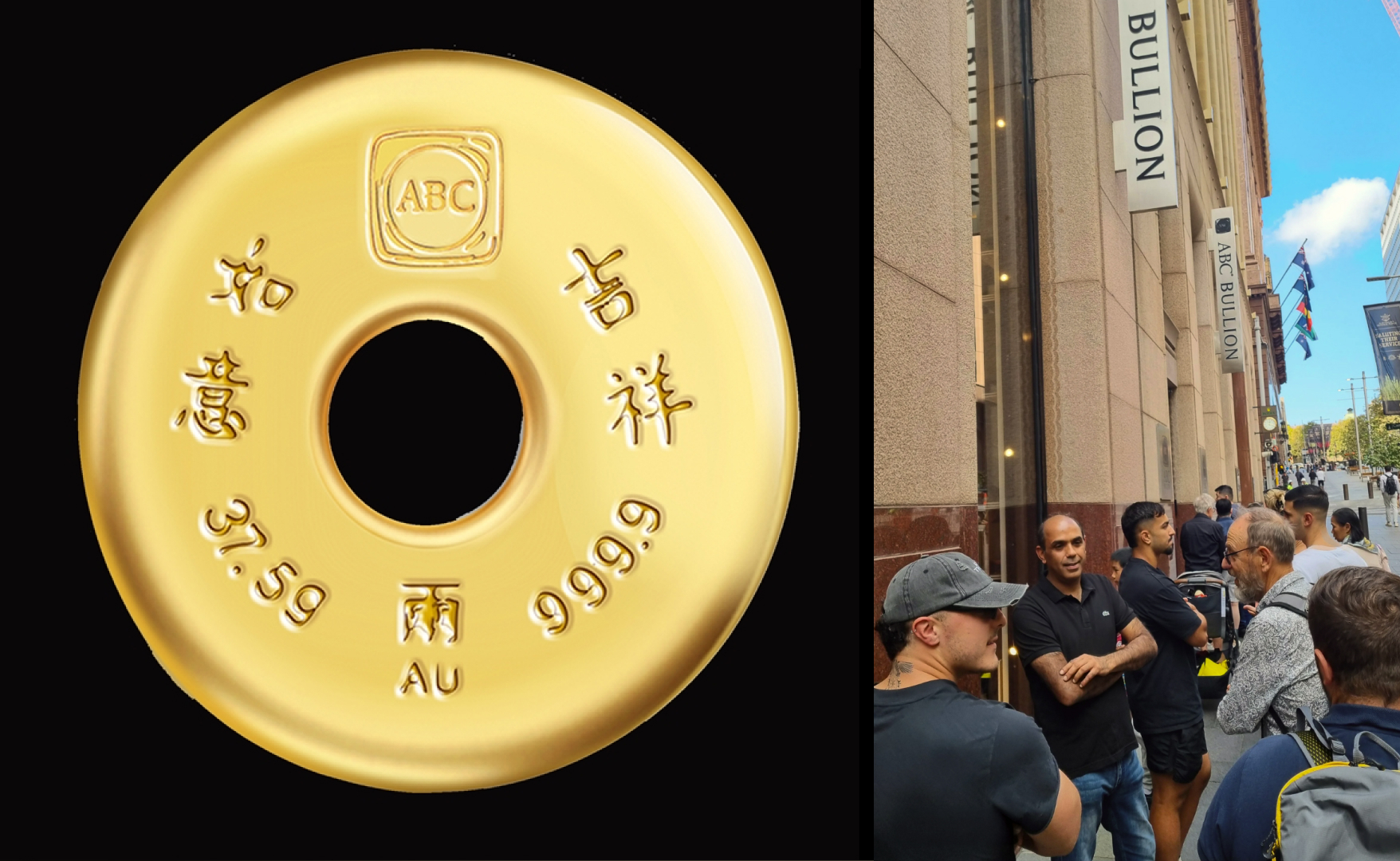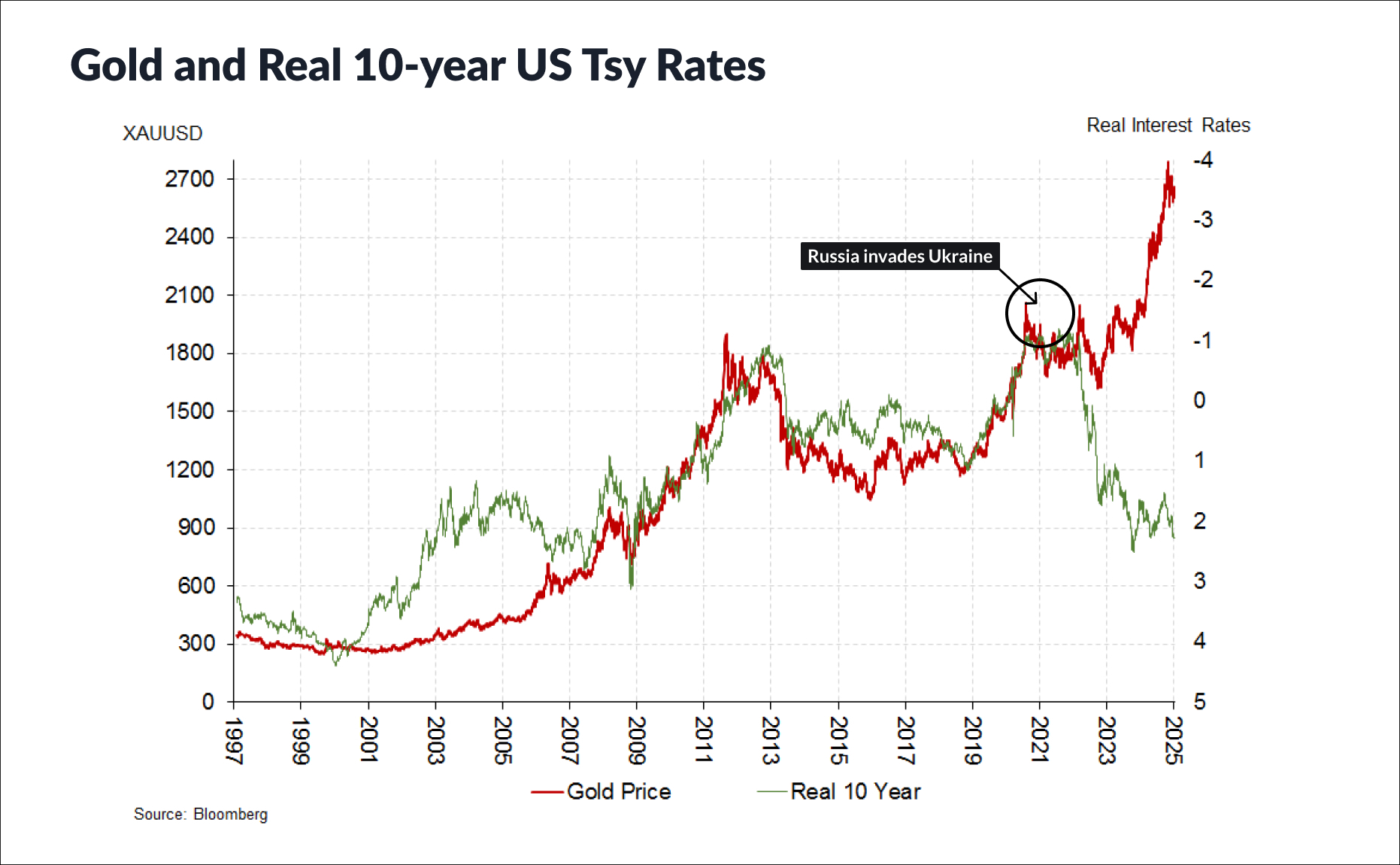Why Aussies are queueing up at Martin Place to buy physical gold as prices surge
Australians spooked by tumbling share markets and forecasts for cash rates to slide in 2025 are forming daily queues to buy physical gold from an ABC Bullion store just a stone's throw from the Reserve Bank's offices on Sydney's Martin Place.
On Tuesday, the broader rush to buy gold pushed prices to a record US$3482 ($5413) an ounce, as Donald Trump's tariff war sent investors searching for a safe place to park their cash and shelter from a potential economic crash.
"It's not all day, every day, but there's been periods in the last few weeks where we've had big queues of people lining up to buy," says Jordan Eliseo, the general manager of gold dealer ABC Bullion.
"It's clear rates are going lower, so people don't want to keep cash in the bank. They're already earning basically zero after inflation, and they'd rather own a physical asset that's a safe haven and wealth protector, so gold boasts that."

Ordinary Aussies demand physical gold
Eliseo says demand to buy physical gold now matches or exceeds the peak of the COVID-19 hysteria around an economic crash, with April's Martin Place shoppers described as "average Aussies" mainly worried about the falling value of cash on forecasts the RBA will cut rates three more times in 2025.
"We get all sorts coming in, many people with disposable investment cash, so they probably own some shares and might have a mortgage and want to diversify with bullion," says Eliseo.
"Then the self-managed super funds are a big part of the market, they tend to invest 15% to 20% of their portfolios, so somewhere between $150,000 and $250,000 depending on the size of the fund, we often then store that gold for them.
"We also have lots of cultural buyers. Indian, Chinese, Vietnamese backgrounds. They tend to self-store - or often wear it."
According to Eliseo, aside from physical bars or coins, one of the store's most popular products among shoppers is a product called a Tael. It's 37.5 grams of gold that's often worn as part of a Hip-Hop-style necklace and now sells for more than $6500 as the metal's price surges.
"Taels are often referred to as donuts, as they have a hole in the middle and plenty of people buy them to wear with gold chains from elsewhere," says Eliseo. "So they wear their wealth, and it's becoming an expensive piece of jewellery right now."
Eliseo adds that only around 25% of ABC Bullion's physical gold sales are in-store, with the majority online or over the phone as investors demand physical gold in preference to exchange traded fund (ETF) products that track the price, or shares in miners listed on the ASX.
Gold versus ASX stocks over 20 years
The metal once considered a 'barbarous relic' unlikely to outperform top technology stocks has now jumped 32% in less than the last four months, punctuated by a global loss of confidence in US dollar assets as its treasuries and share markets are sold-off, despite the Fed cutting interest rates 100 basis points since last September.
Gold bugs argue 2025's price surge means it has now outperformed stocks as an investment over the past 20 years.
As an experiment to test these claims, we can compare the performance of the S&P/ASX 200 Accumulation Index (ASX: XJOA) versus the gold price over the past 20 years by employing some simple math.
Using the Accumulation Index allows us to account for the fact that stocks return dividends as income to investors, whereas gold, as a lump of metal, doesn't return any cashflow to its owners.
On April 1, 2005, the S&P/ASX 200 Accumulation Index closed around 22,700 points, versus a gold price of US$427.50 an ounce. In other words, back then you'd have needed 53 ounces of gold to buy the 22,700 points on the index.
Today, the index has climbed to 104,814 points, versus a gold price of US$3,482 an ounce to mean you'd only need 30.1 ounces of gold to buy the index.
This means gold has arguably outperformed ASX stocks - including the benefits of dividends - since 2005.
Even if you go back to this time last year before Trump's election and divide the index level of 99,292 by the gold price of US$2,316, you'd have needed 42.9 ounces of gold to buy the index, which mean it's still comfortably ahead of stocks since April 2005.
Debt, deficits, US, Russia, China split
The metal's latest rise started in the pandemic-era on worries over the US's debt pile that reached US$36.2 trillion in April. The debt ballooned in 2024 as the US government spent US$6.75 trillion, but collected just US$4.92 trillion in revenue.
The US$1.83 trillion deficit was funded by new bond issues to stoke bets that fresh money supply will lift inflation and the price of scarce assets like gold.
Previously, we've also pointed out how Russia's invasion of Ukraine in February 2022 fuelled gold's bull run, as the metal's price movements split from its 30-year long inverse correlation to bond yields.
That divergence can be seen in the chart below and is another factor allowing gold to outperform stocks over the last 20 years.
The chart shows how between 1990 and 2022 the gold price tracked "real interest rates", defined as the risk-free rate on US government 10-year bonds minus the inflation rate.
In other words "real interest rates" are positive when bond yields are higher than the rate of inflation.
This meant gold would rise in value as "real interest rates" fell, and fall in value as real interest rates climbed. But that link split in Feb 2022 - after Russia invaded Ukraine and prompted many nations to seek alternative reserves to US dollar holdings that could be confiscated or sanctioned.

Gold versus real interest rates inversely correlated, as real risk free rates rise gold should fall, although this correlation split in early 2022.
To get a grasp on where the gold price goes next, it's important to understand what the price rises are really signalling.
This is up for debate, but the latest leg higher is undoubtedly as large global investors dump US dollar denominated assets like stocks and bonds in favour of gold.
The US dollar is also being sold-off, with the DXY US Dollar Index at a three-year low of 98.1 points in another move that makes gold sold in US dollars more attractive to overseas investors.
If you have a view on where to next for gold, please leave a comment below.
Do you think Australians are right to line up for physical gold given the RBA is expected to cut cash again in 2025? Or is the rally a bull trap with gold likely to tumble if Trump gives ground on his trade war?
.jpg)
5 topics
.jpg)